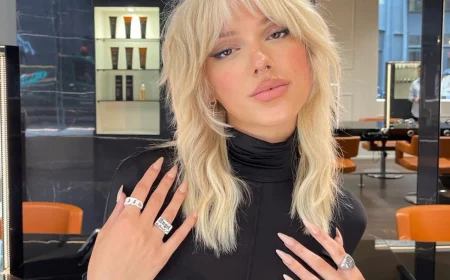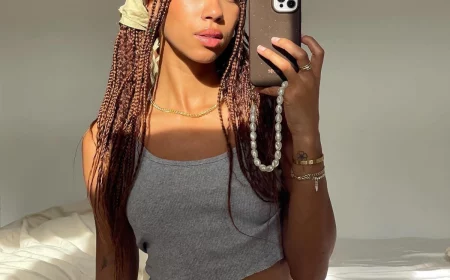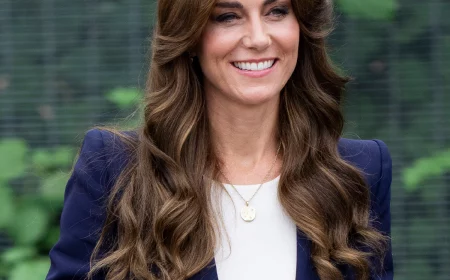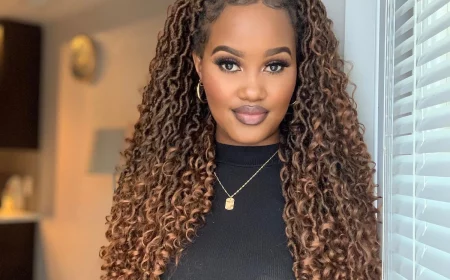Peekaboo Braids: The Pro’s Guide to Nailing the Look (and Not Damaging Your Hair)
I’ve been doing this for a long time, and I’ve seen countless styles come and go. But some just have that special something—they stick around. Peekaboo braids are definitely one of them. Honestly, they’re more than just a passing trend; they’re a clever, artistic way to play with color without the commitment of dyeing your whole head.
In this article
Think of it like peekaboo highlights, but for braids. We tuck a layer of colored braids underneath your main color, creating this awesome flash of personality every time you move your head. It’s a style that offers the best of both worlds.
It’s no wonder they’ve become so popular. You have complete control. You can go for a subtle, almost-natural contrast or something seriously bold and vibrant. I’ve seen it work beautifully for clients who need a more conservative look for their 9-to-5 but want to let their creative flag fly on the weekends. Just imagine: a sleek, professional bun that hides the color, which then transforms into a vibrant cascade when you let your hair down. The beauty is all in that element of surprise.
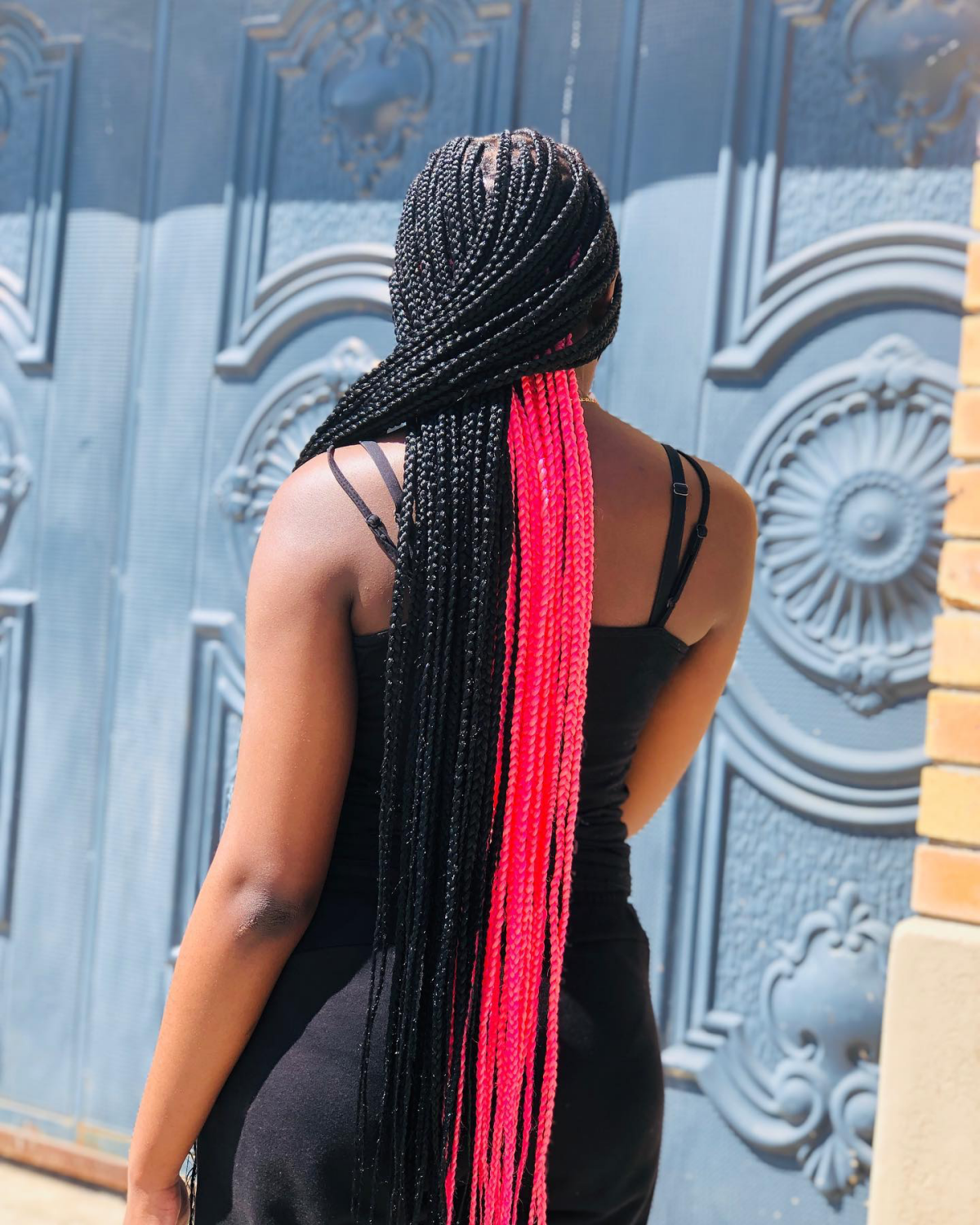
First Things First: Let’s Talk About Your Hair
Before we even think about grabbing a comb, we need to talk about the foundation—your natural hair. A stunning braided style is only possible if your hair is healthy to begin with. We call braids a “protective style,” and that’s because they shield your hair from daily styling and manipulation, which helps cut down on breakage. But here’s the catch: the braids themselves can cause damage if they aren’t installed correctly. This is where a little hair science comes in handy.
Getting to Know Your Hair Type
Every single head of hair is unique. As a stylist, I always check three key things before I start: texture, density, and porosity. Understanding these helps me tailor the style to you perfectly.
- Texture is about how thick each individual strand of your hair is. If you have fine hair, it simply can’t handle the same weight or tension as coarse hair. For finer hair, I’ll always use smaller sections and be mindful not to overload it with too much extension hair. This prevents putting unnecessary stress on your roots. For coarser hair, we can get away with chunkier braids that will hold their shape beautifully.
- Density refers to how many strands of hair you have on your scalp. With low-density hair, the scalp can be more visible, so the placement of that peekaboo layer is critical. If we place it too high, it won’t have that hidden, “peekaboo” effect. High-density hair, on the other hand, gives us a much thicker canvas to work with, making it easier to conceal the colored layer.
- Porosity is all about your hair’s ability to absorb and retain moisture. A quick way to test this at home? Spray a small, clean section of your hair with water. If the water beads up and sits on top, you likely have low-porosity hair. If your hair soaks it up instantly, you’re looking at high porosity. High-porosity hair gets thirsty fast, so before braiding, it’s crucial to use a good leave-in conditioner and seal it with a light oil. This locks in moisture so your hair doesn’t get dry and brittle inside the braids.
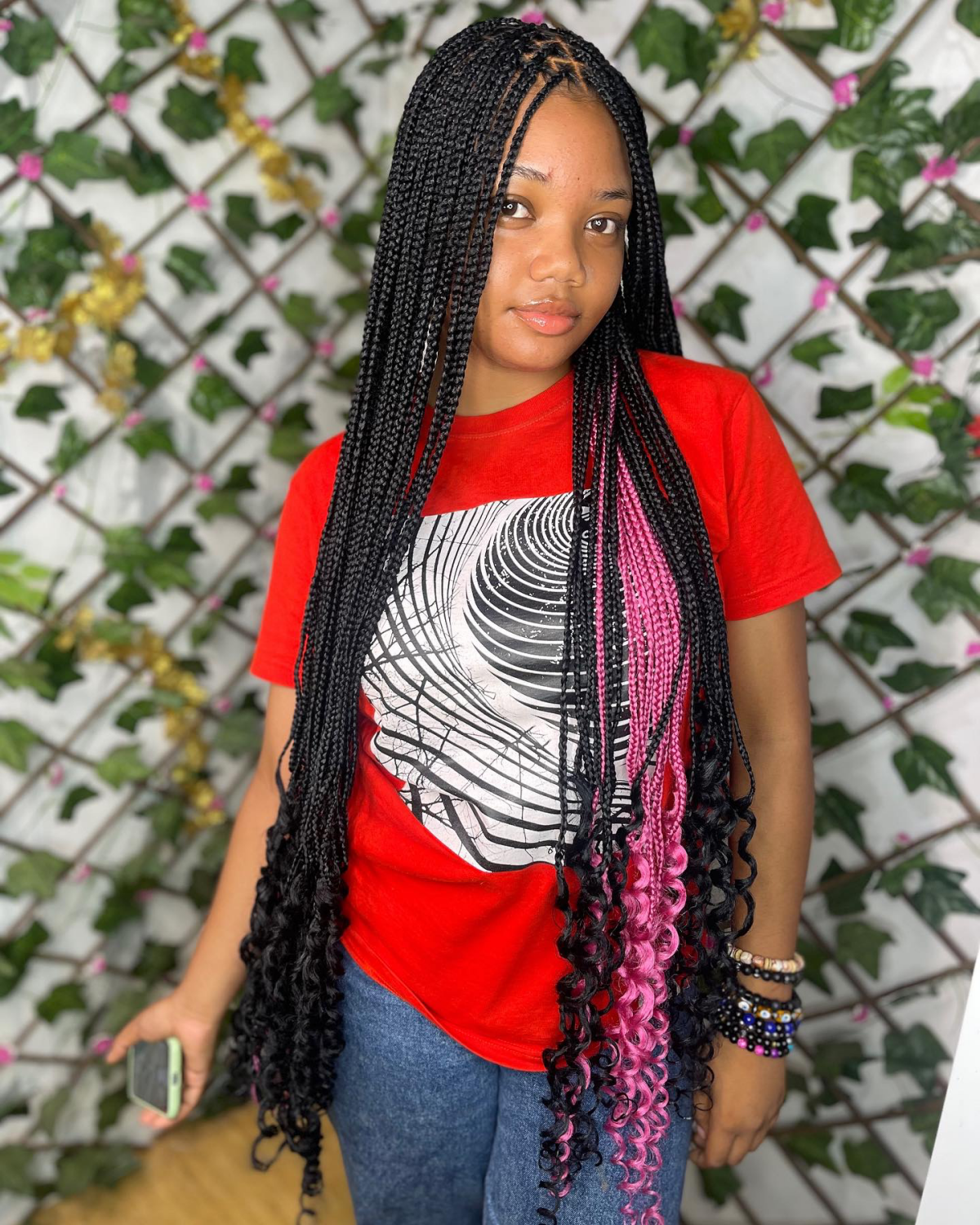
The Golden Rule: Tension Matters
Okay, let’s get serious for a moment. Tension is probably the single most important factor for braid safety. The goal is a braid that’s snug enough to be secure but NEVER so tight that it’s painful or pulling at the follicle.
Excessive tension can lead to traction alopecia, which is hair loss caused by constant pulling. It often starts with tiny, tender bumps around your hairline or at the base of the braids. A braided style should never, ever hurt. And I’m not talking about a little soreness from the new weight—I mean that sharp, “I need a painkiller to sleep” kind of hurt. If you feel that, you need to speak up immediately or take the braids out. Period.
The Ultimate Braiding Toolkit: Prep & Materials
A beautiful, long-lasting style starts with quality materials and proper prep. Rushing this stage is a rookie mistake that can lead to a messy look or, even worse, an itchy scalp. Let’s break down what you need.
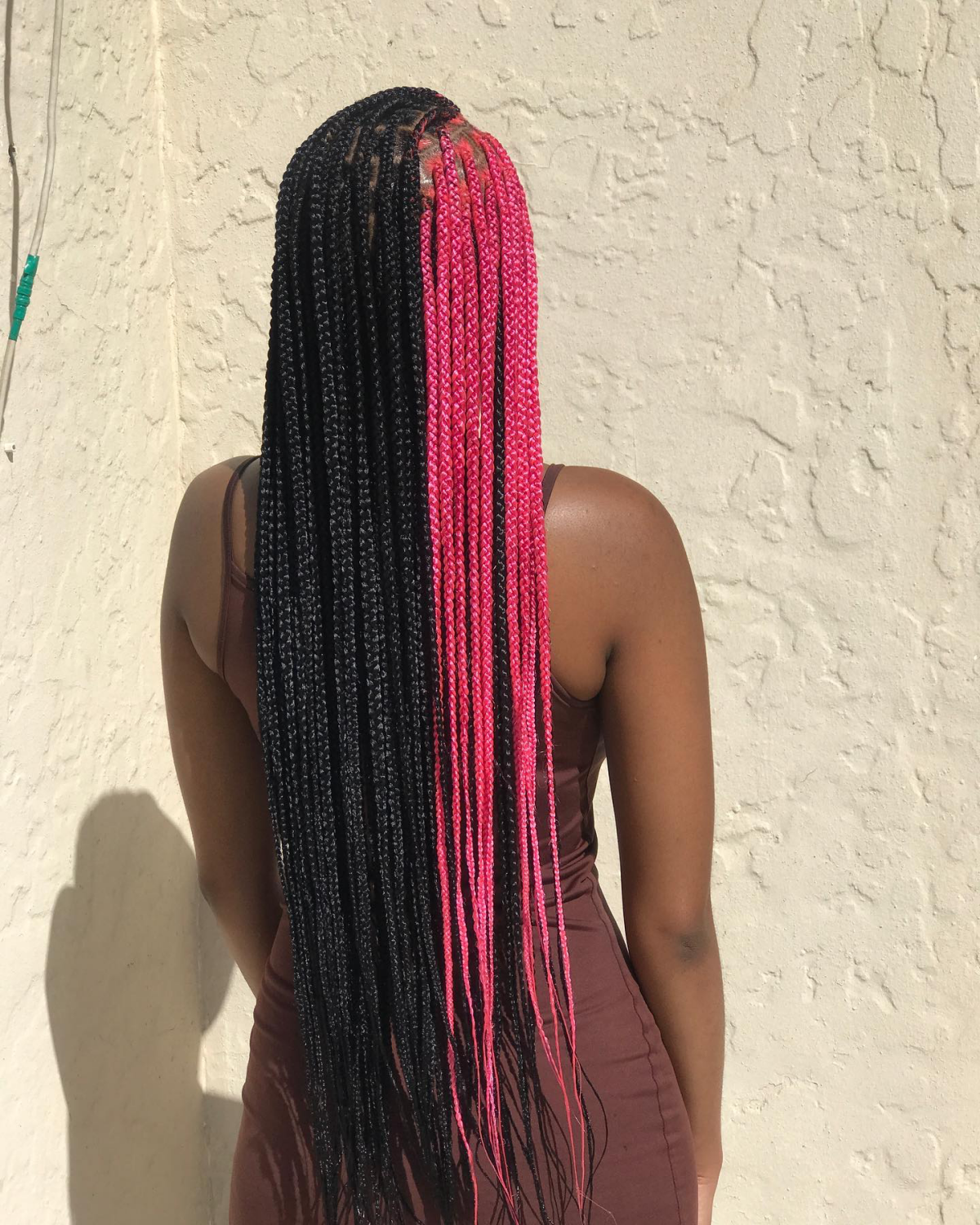
Choosing Your Braiding Hair
The hair you choose makes a huge difference. For peekaboo braids, you’re generally looking at two main options:
Synthetic Kanekalon Hair: This is the go-to for most braiding styles, and for good reason. For peekaboo styles, the color vibrancy is just fantastic—you get bold, true colors that don’t fade. My advice? Always opt for pre-stretched Kanekalon. It comes already tapered at the ends, which saves a ton of time and gives you a much cleaner, more natural finish. You can find this at any beauty supply store, usually for around $3 to $7 a pack. Its only real drawback is that it can sometimes feel a bit rough and cause itchiness for sensitive scalps… but we have a fix for that!
Human Hair: For a softer, more luxurious feel, some people prefer human hair. It moves more naturally and is lighter, but it’s also significantly more expensive. The colors tend to be more muted and natural-looking compared to synthetic options. It’s a great choice if you have a bigger budget and want a very subtle, premium-looking style.
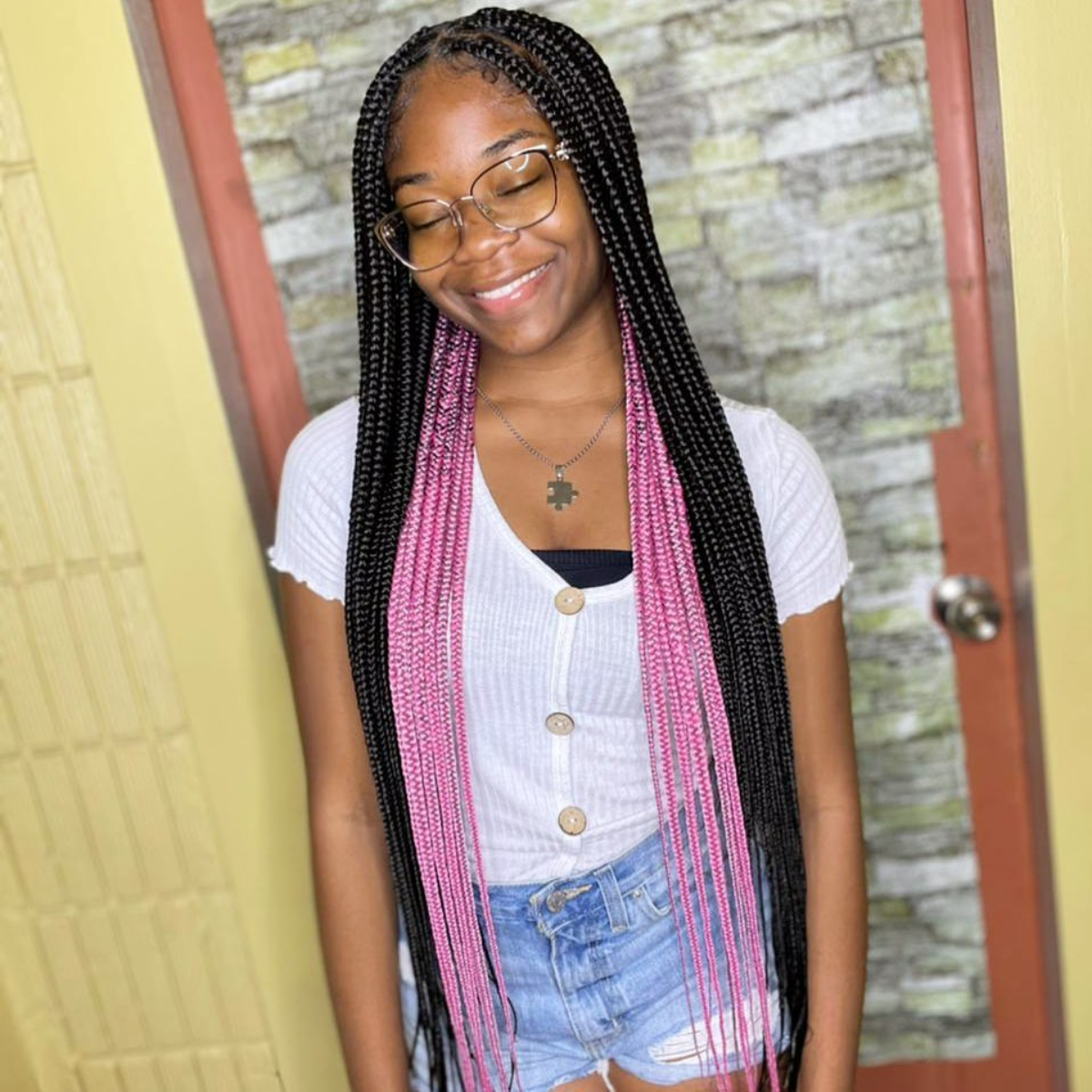
The Anti-Itch Secret Weapon: The ACV Rinse
Heads up! This is a step you should never skip, especially with synthetic hair. A lot of synthetic braiding hair is coated with an alkaline base to prevent mold, but this coating can cause major scalp irritation and itching for many people.
Here’s how to fix it:
- Fill a clean sink or basin with warm water and add about a cup of Apple Cider Vinegar (ACV).
- Un-bundle the synthetic hair (leave the rubber bands on the ends!) and submerge it in the mixture. Let it soak for at least 20-30 minutes. You might see a white film rise to the surface—that’s the coating you’re removing.
- Rinse the hair thoroughly with cool water, gently squeeze out the excess, and hang it to dry completely before you use it.
Trust me, this one simple step can be a total game-changer for your comfort.
Putting It All Together: Time, Cost, and Aftercare
So, you’re ready to get your peekaboo braids. What should you realistically expect?
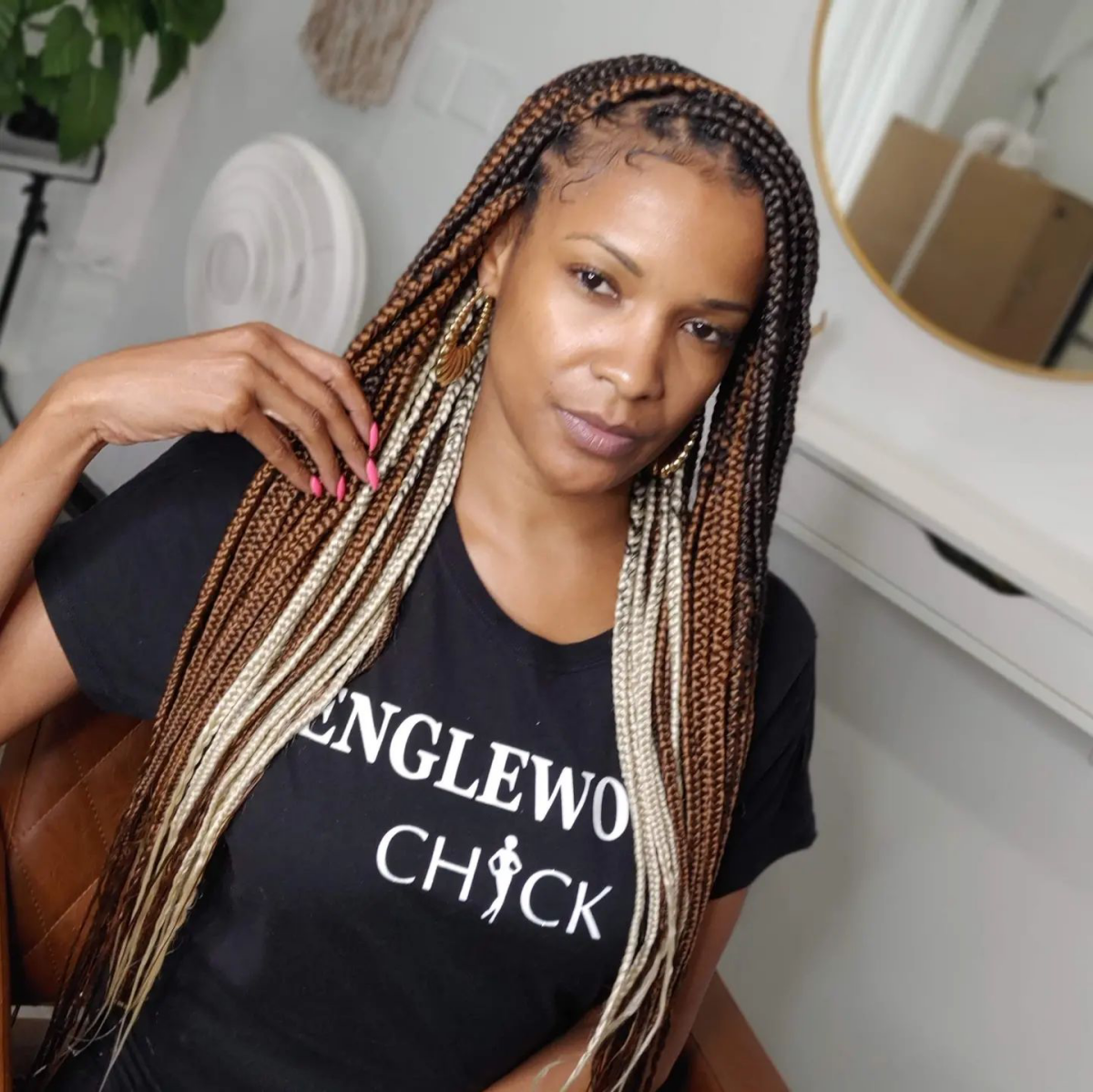
Time & Cost: This isn’t a quick style. Depending on the size and length of your braids, be prepared to sit for anywhere from 4 to 8 hours. As for cost, it can vary a lot based on your location and the stylist’s experience, but a good ballpark for a full head of knotless peekaboo braids is typically somewhere between $180 and $450. For a standard, mid-back length style, you’ll probably need about 4-5 packs of your main color and 2-3 packs for your peekaboo color.
Making Them Last: Aftercare is Everything
With proper care, your braids can look great for 4 to 6 weeks (any longer can put stress on your new growth). Here’s how to maintain them:
- Washing: Don’t just dunk your head under the shower! Dilute some shampoo with water in a nozzle-tip applicator bottle. Apply it directly to your scalp and gently massage with the pads of your fingers. Rinse thoroughly by letting the water run down the length of the braids. Follow up with a light, diluted leave-in conditioner the same way.
- Scalp Care: Keep your scalp happy! A spritz of witch hazel on a cotton pad can help cleanse your scalp and soothe any minor itchiness between washes. You can also use a light oil like jojoba or almond oil on your scalp every few days to keep it from getting dry. Avoid heavy greases that can cause buildup.
- Bedtime Routine: Always protect your braids at night. A silk or satin scarf or bonnet is your best friend. It reduces friction, which helps prevent frizz and keeps your style looking fresher for longer.
The Takedown: When it’s time to say goodbye, be patient. Snip the ends of the braids below where your natural hair ends. Then, get a good rat-tail comb and plenty of conditioner with good slip. Work on one braid at a time, gently unbraiding and using the tail of the comb to carefully loosen any knots or buildup at the root. Rushing this process is how breakage happens, so put on a movie and take your time!
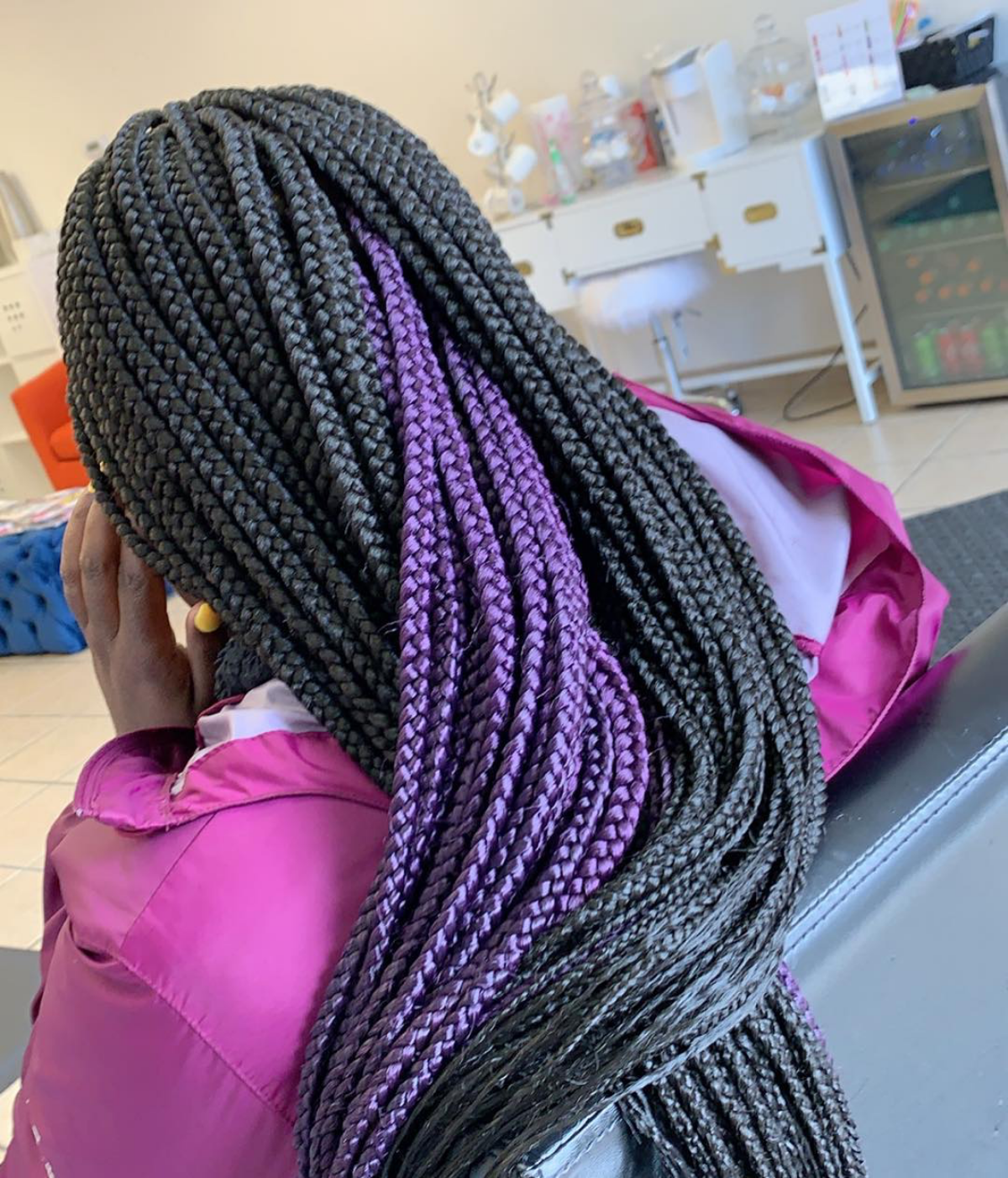
Galerie d’inspiration

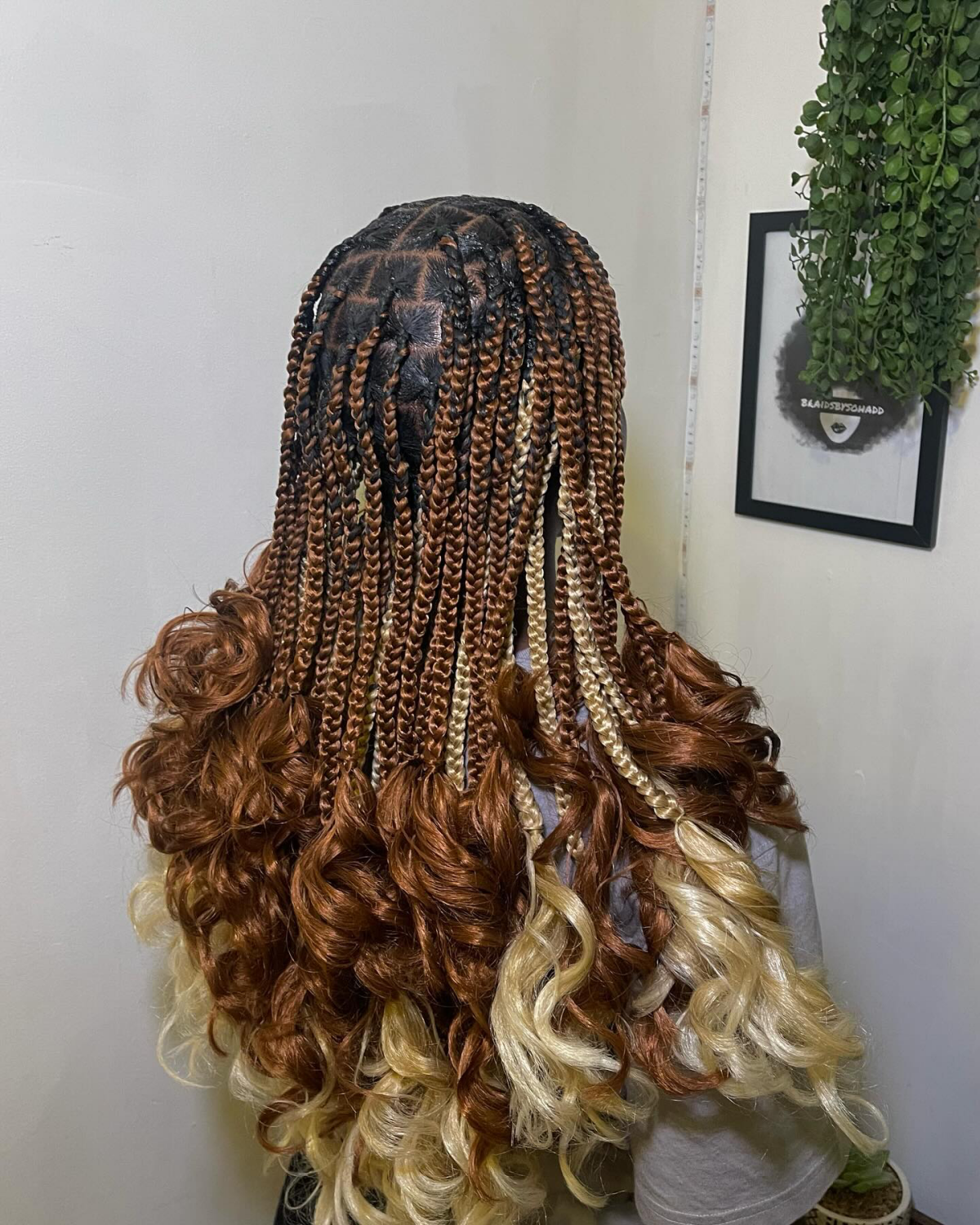
When selecting the hair for your peekaboo layer, the type of fiber makes all the difference for vibrancy and longevity. While human hair is an option, high-quality synthetic fibers are often preferred for their brilliant color payoff and lighter weight.
- X-Pression Ultra Braid: A cult favorite for its softness and pre-stretched ends, making braiding smoother and faster.
- RastAfri Freed’m Silky Braid: Known for its vast range of bold, fantasy colors that won’t fade quickly.
- Spectra EZ Braid: This brand offers spetra fiber, which is naturally antibacterial and itch-free, a huge plus for sensitive scalps.
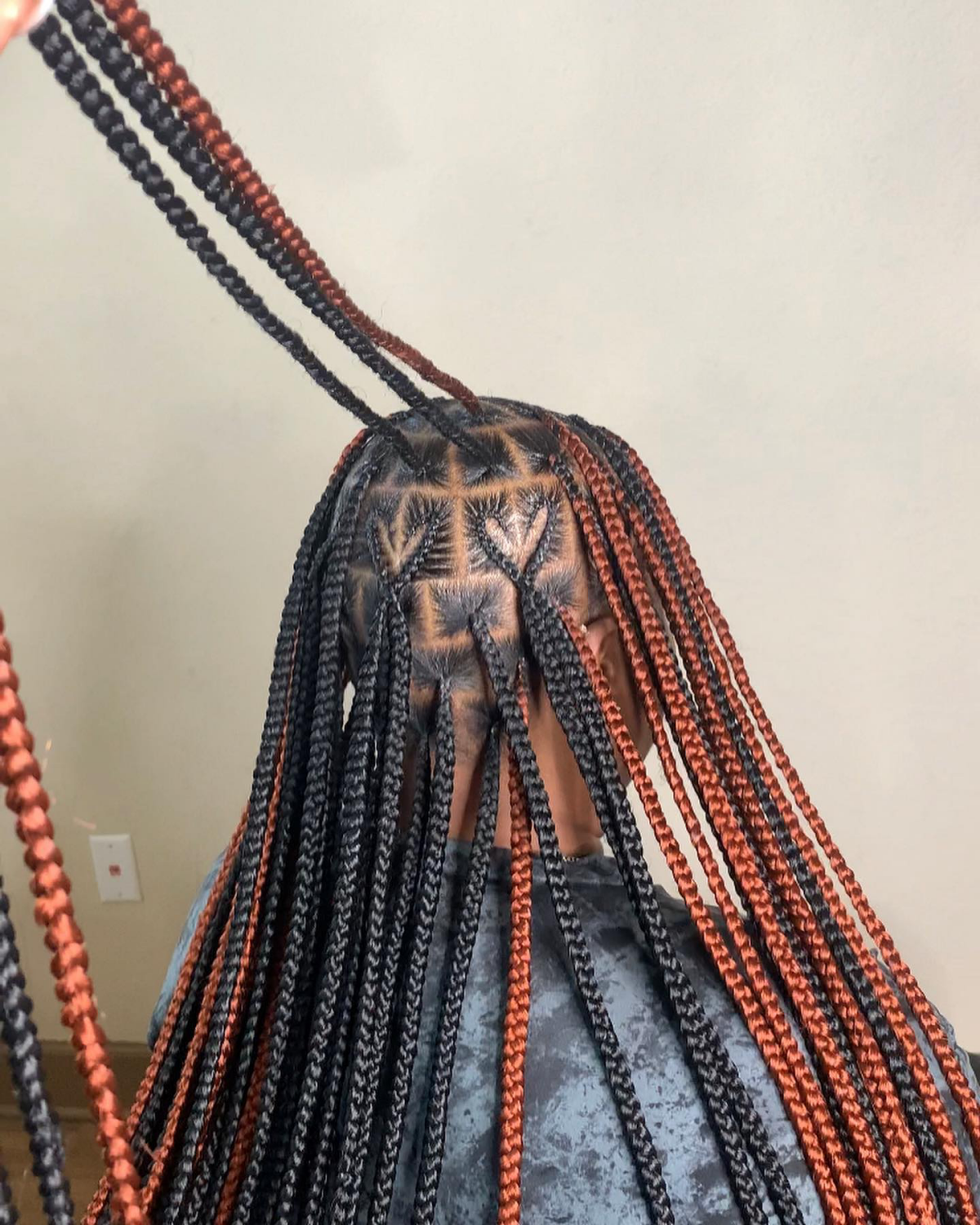
Over 70% of hair breakage associated with braids comes from improper tension and lack of moisture.
This statistic is a powerful reminder that
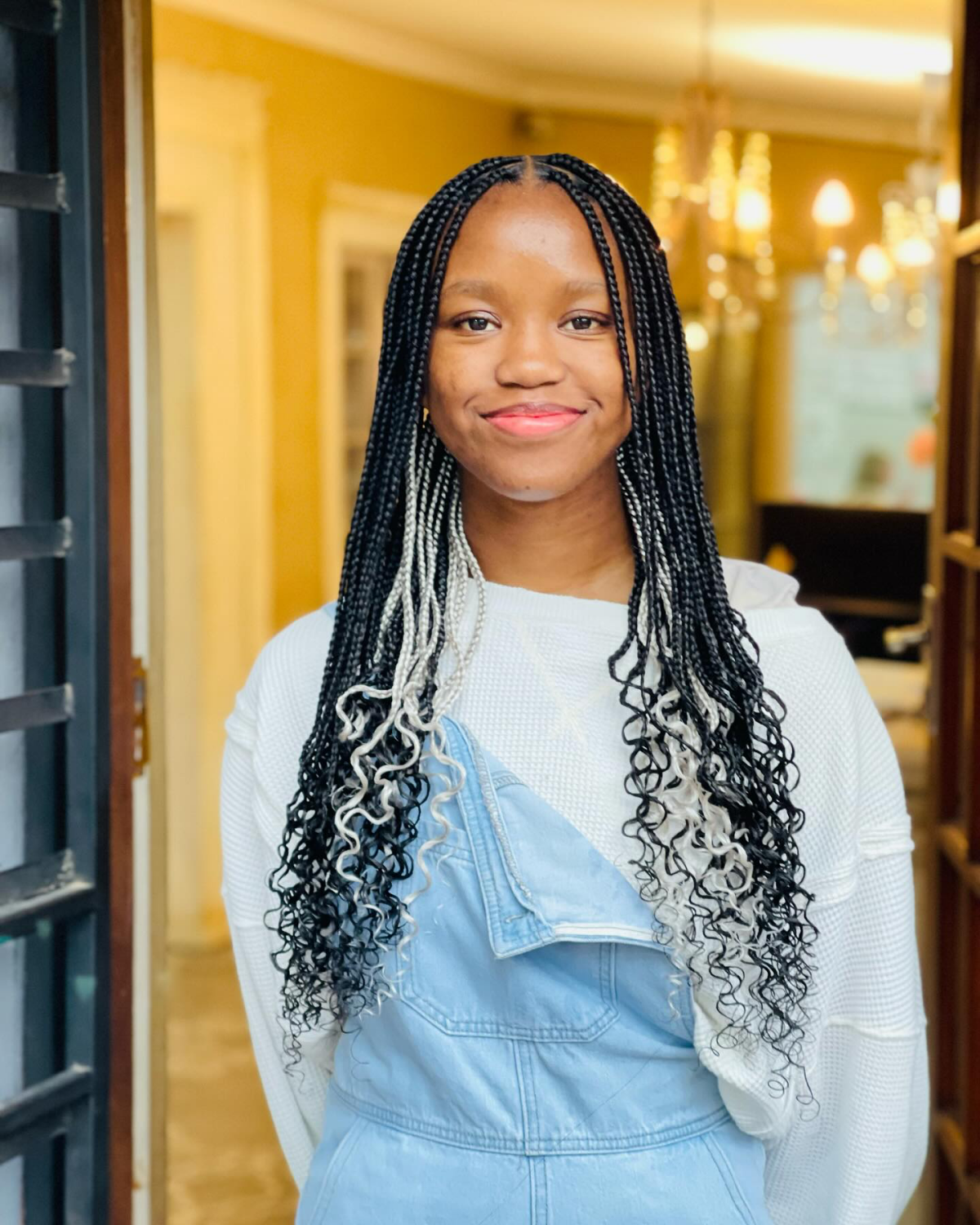
Wondering how to choose the perfect peekaboo shade?
Think contrast and undertones. For a subtle, sun-kissed effect in dark brown or black braids, opt for warm peekaboo tones like honey blonde, copper, or auburn. If you’re seeking a high-impact, edgy look, create a stark contrast with cool tones like platinum blonde, silver, or even a vibrant cobalt blue. The goal is to create a flash of color that complements, yet surprises.
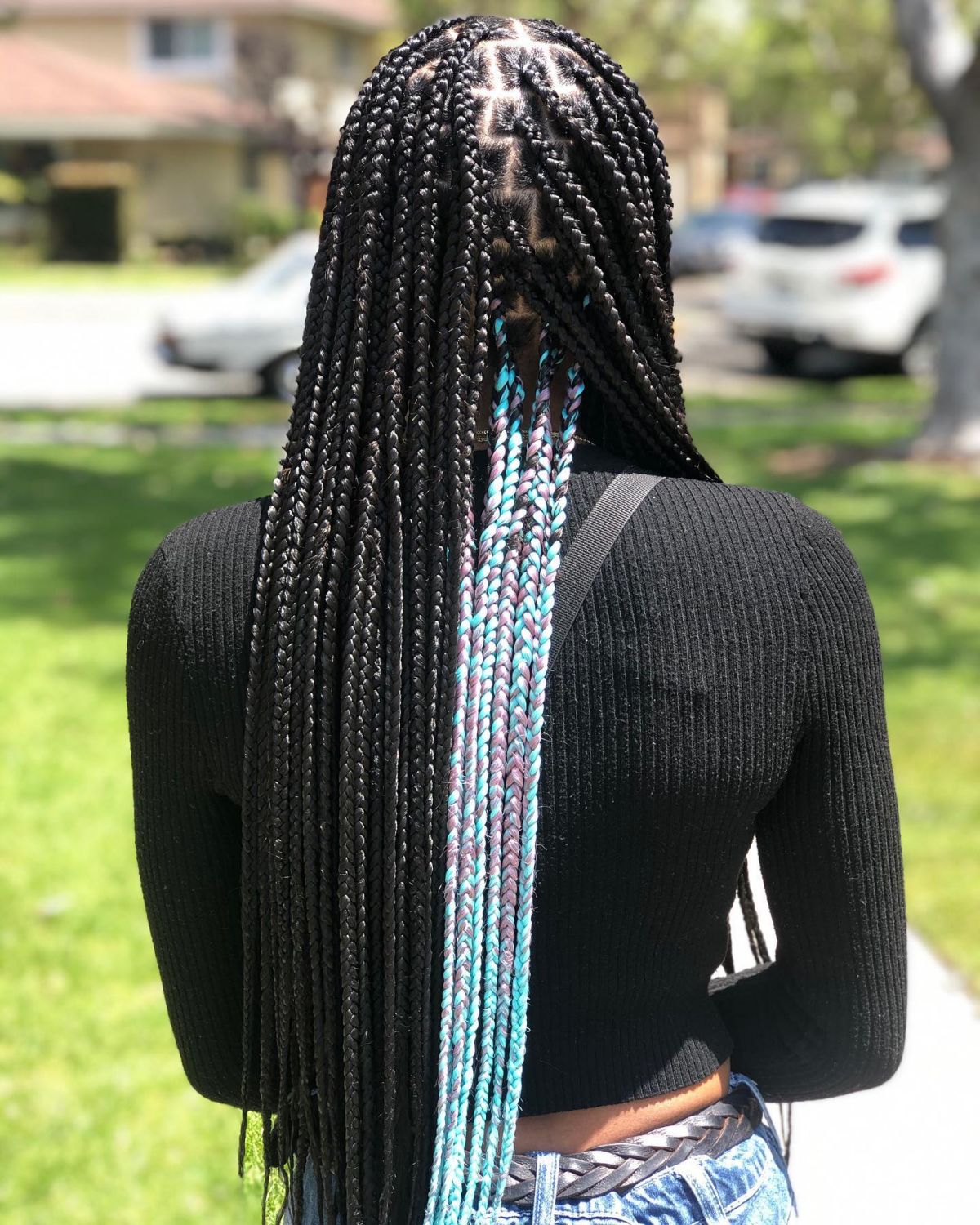
- Keep your scalp clean and flake-free without disrupting your roots.
- Extend the life of your style by several weeks.
- Reduce the itchiness that can sometimes start a week or two in.
The secret? A simple DIY scalp cleanser. Mix one part apple cider vinegar with three parts water in a spray bottle. Lightly spray directly onto your scalp, let it sit for a few minutes, and gently wipe away residue with a damp cloth. It cleanses without creating frizz.
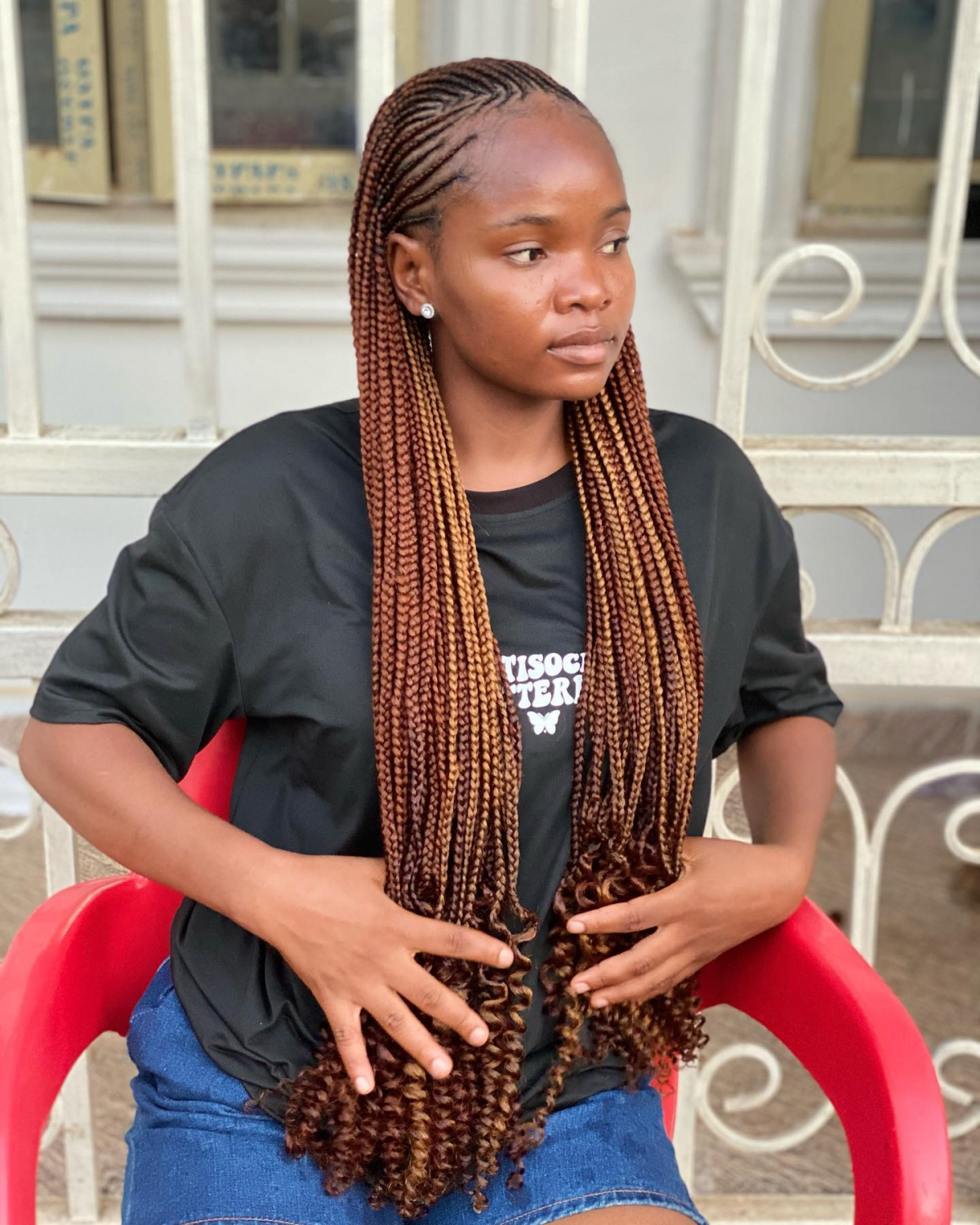
The true magic of peekaboo braids lies in the movement. It’s the unexpected flash of turquoise as you tie your hair up at the gym, or the subtle hint of lavender that catches the light when the wind blows. It’s a style that carries a secret, giving you an inner confidence and a playful edge. It transforms a classic look into something personal and dynamic, revealing a different side of you with every turn of your head.
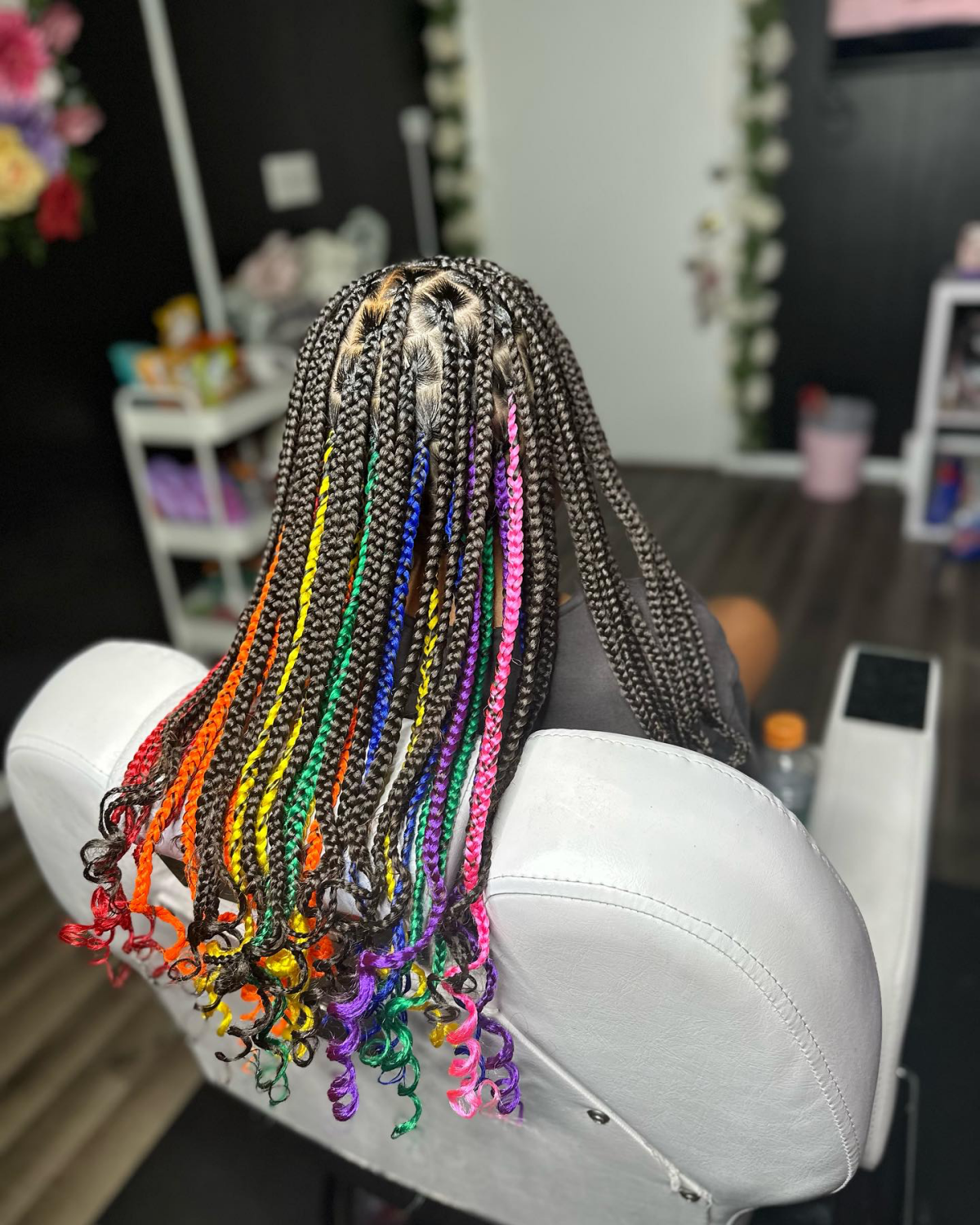
The Wrong Extension Hair: Not all braiding hair is created equal. Using heavy, waxy, or overly coarse synthetic hair can add unnecessary weight, leading to scalp stress and a stiff, unnatural look. Always opt for lightweight, pre-stretched kanekalon or spetra fibers.
Neglecting Your Night Routine: Skipping a silk or satin bonnet is a fast track to frizz and premature aging of your style. The friction from cotton pillowcases causes flyaways and can weaken the braid structure over time.
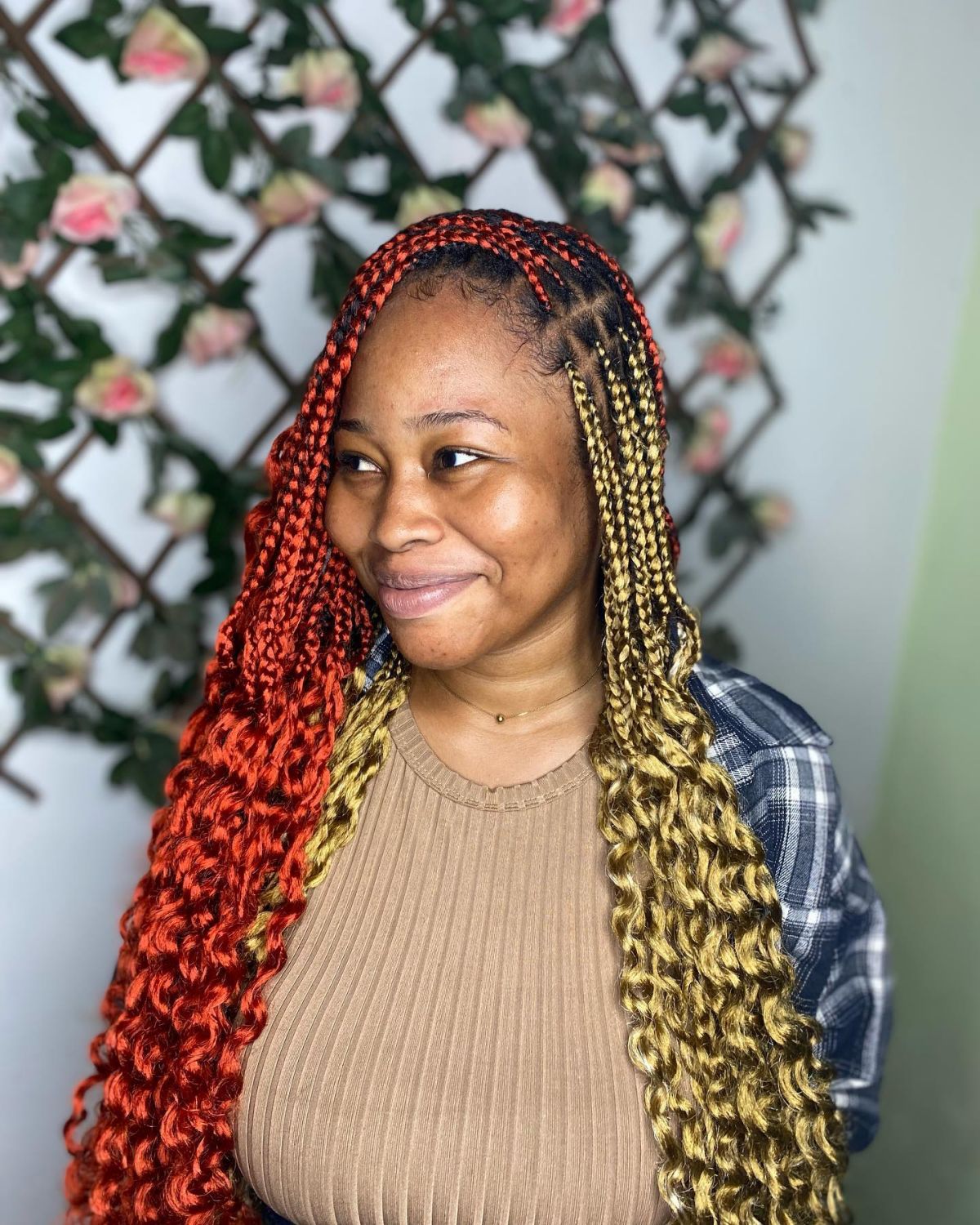
Classic Knotless: The braids feed in gradually, creating a flat, natural-looking root that places minimal tension on the scalp. Ideal for those with sensitive scalps or finer hair.
French Curl Braids: This style leaves the ends of the braids loose and curled, offering a soft, romantic, and bohemian vibe. The peekaboo effect is gorgeous as the colored curls mix with your base color at the tips.
While classic knotless offers supreme comfort, French curls provide a trend-forward, high-fashion finish.
A common pitfall: Making the peekaboo layer too thick or placing it too high on the head. This destroys the ‘peekaboo’ element, making it look more like a distinct color block. A professional stylist will ensure the hidden layer is just substantial enough to make an impact when revealed, but fine enough to remain concealed under the top layer for that perfect, subtle surprise.

